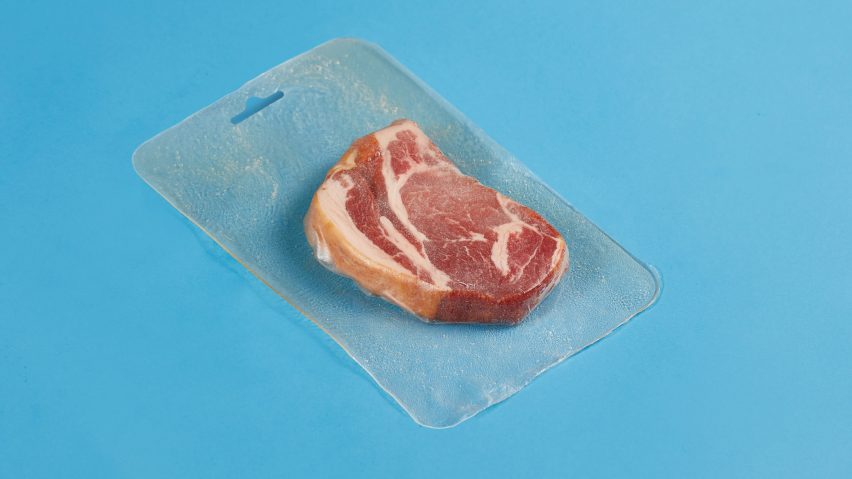
Valdís Steinarsdóttir turns animal skin and bones into food packaging and vases
Icelandic designer Valdís Steinarsdóttir is turning byproducts from the meat industry into vessels made of bone and a bioplastic material for packaging.
The Just Bones project saw Steinarsdóttir create containers from ground animal bones, while Bioplastic Skin transforms animal skin into packaging for the same creature's meat.
Both materials dissolve in hot water and biodegrade within weeks.
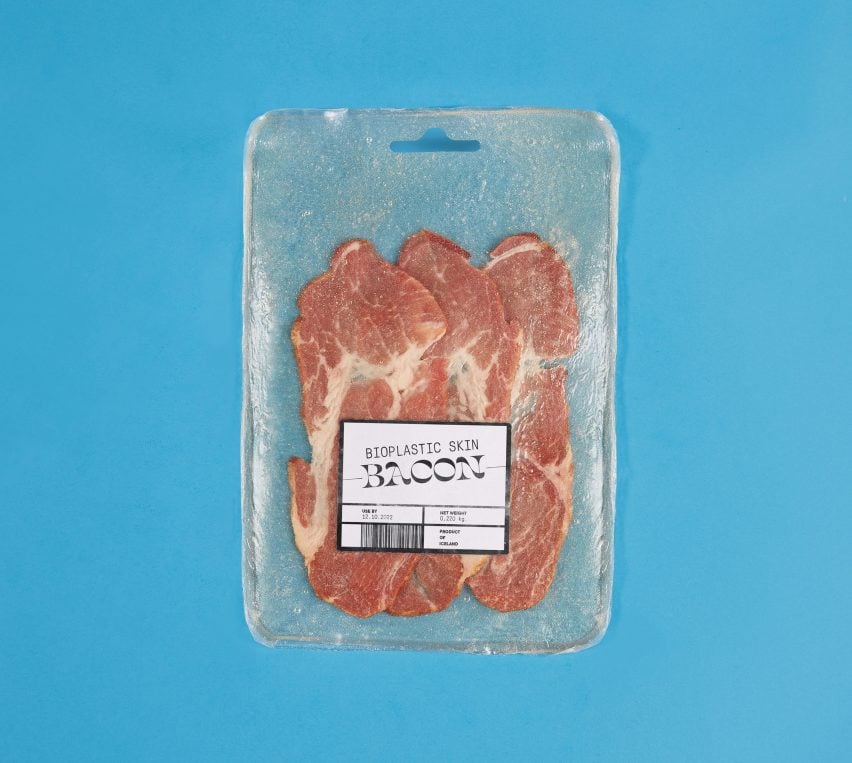
Her designs are an attempt to come up with new ways of reusing the amount of waste that is produced by slaughterhouses.
"I found meat processing to be both an extremely hard and morally challenging topic to explore," Steinarsdóttir told Dezeen.
"In fact, that was exactly what inspired me to go further, because I think as designers we need to be unflinching and ready to tackle uncomfortable issues."
"To make new discoveries, it is often good to look backwards and rethink accepted norms and established ways of doing things," she added.
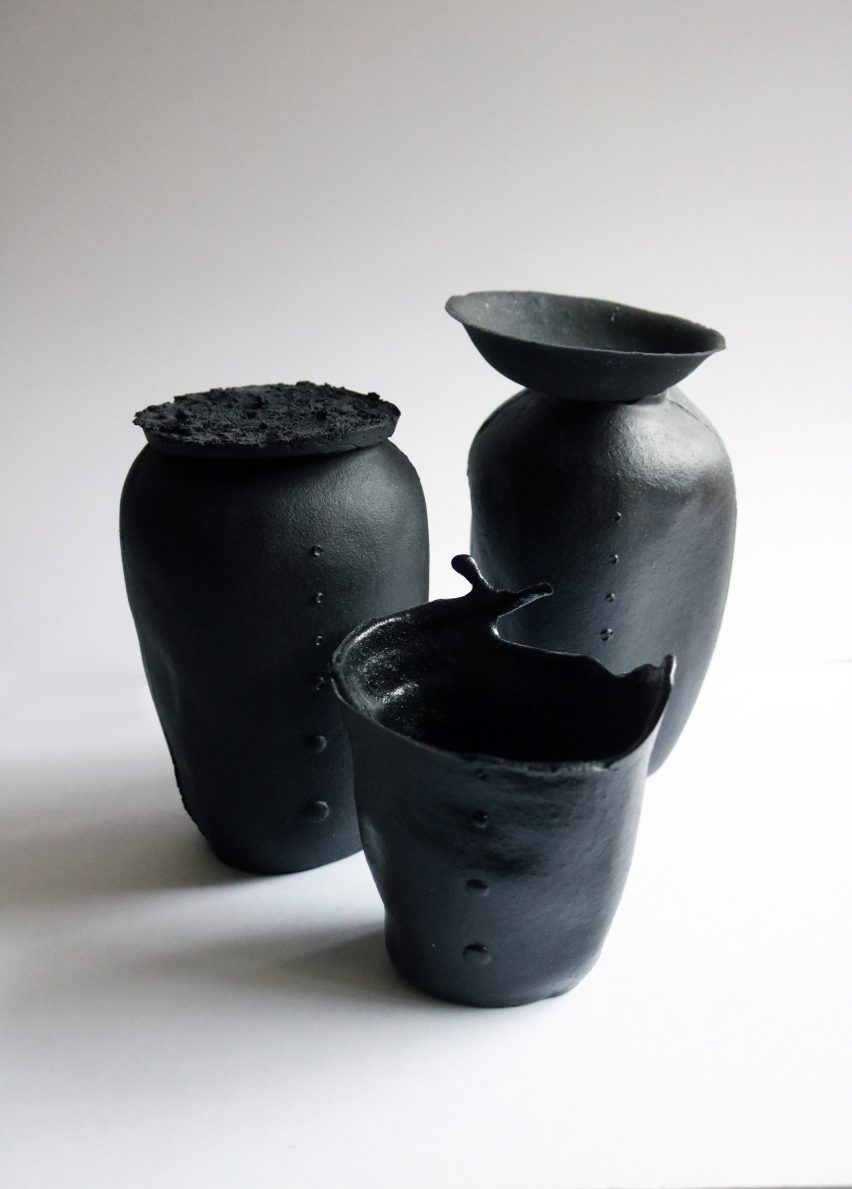
Steinarsdóttir sources her materials from local slaughterhouses and farmers before transforming them into new materials. The bowls and vases for Just Bones are made by grinding down the bones to a powder, using an advanced mortar machine.
She likens the process to the creation of MDF, which is made by breaking down wood into fine particles that are bound together by wax and a resin binder.
The designer creates the glue that works as a binder for her vessels by putting the bones in sour fruit extract and then boiling them to collect the gelatine.
"First when I mix the material it is liquid so I can mould it, similar to moulding ceramics. Once it has dried, it becomes strong and I can drill, saw, and laser cut it, for example," she explained.
"The material is biodegradable, which is a crucial part of all my material research."
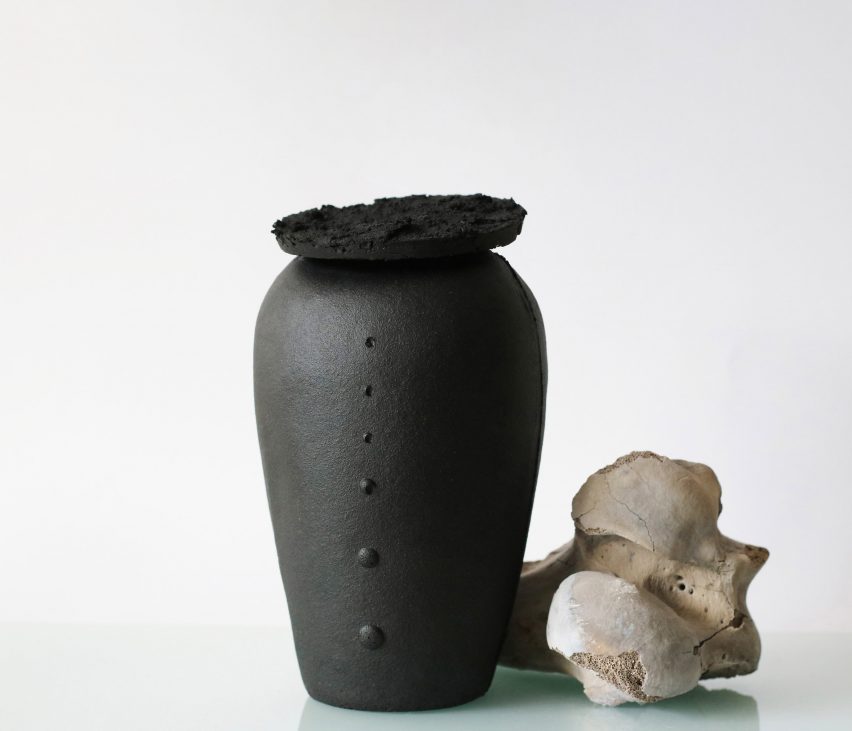
The bone vessels stay firm as long as they're dry, but aren't waterproof and will dissolve in hot water in about a week.
The different colours of the vessels are created by Steinarsdóttir – who produces all her products herself – heating the bones at different temperatures.
"Because I make the material on a small scale, I prepare the bones myself," she said. "I find it an important part of the project because I want to stay close to the process."
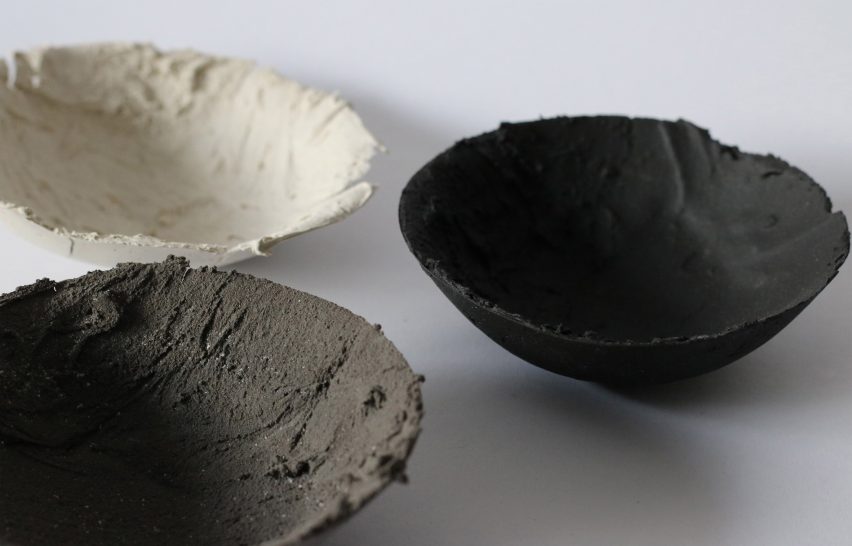
Similar to Just Bones, Bioplastic Skin was created as containers, but it's a thinner material made from animal skins that Steinarsdóttir envisions being used for food packaging. The designer based its production process on a historic method.
"The process of making Bioplastic Skin involves boiling animal hides to collect gelatine," she explained.
"People have been using this method for centuries to make wood glue. I modified this process in order to create the plastic-like material."
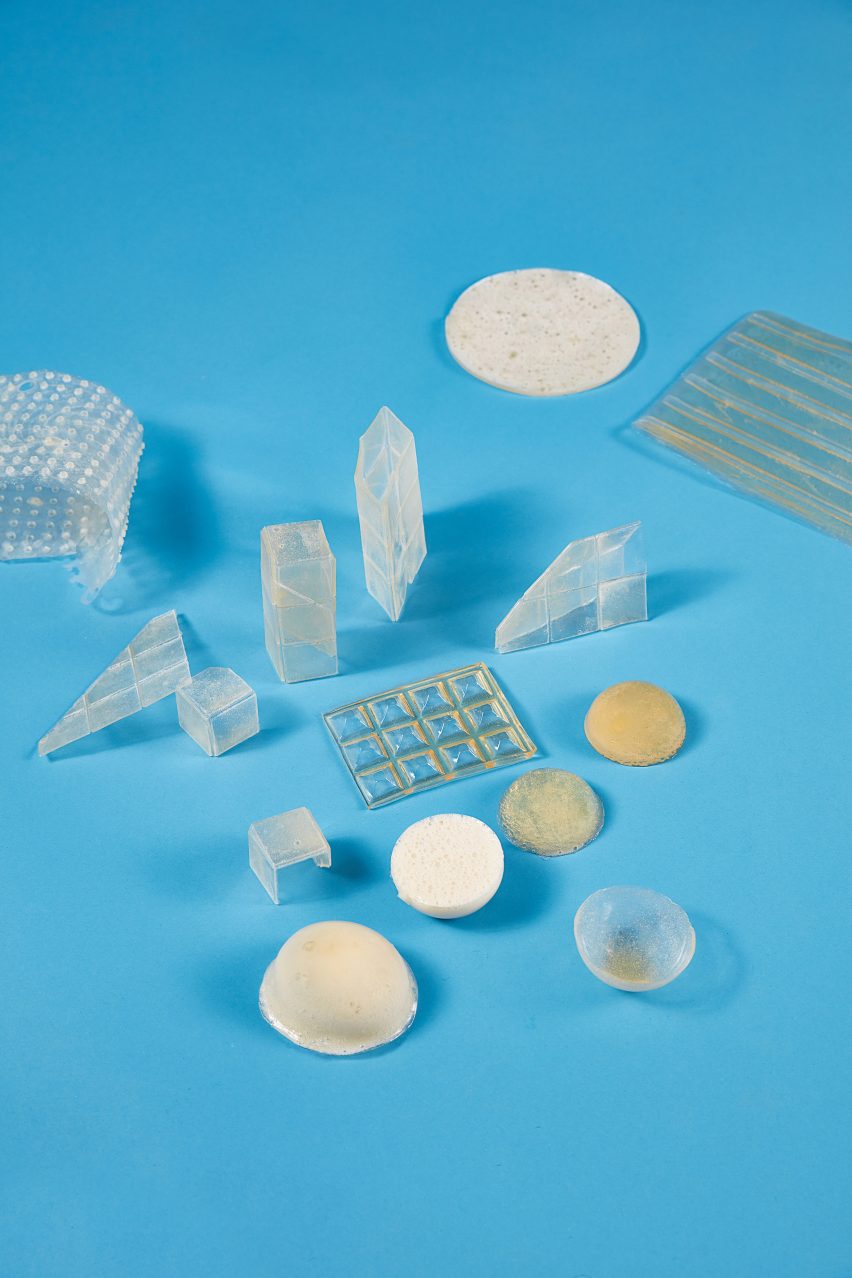
"I found that the natural state of the material is inelastic so the experimentation involved finding the best way of drying the material correctly so it would not deform," she added.
"To make the material soft I experimented with mixing different ratios of sugar alcohol into it, to get a variety of flexibility."
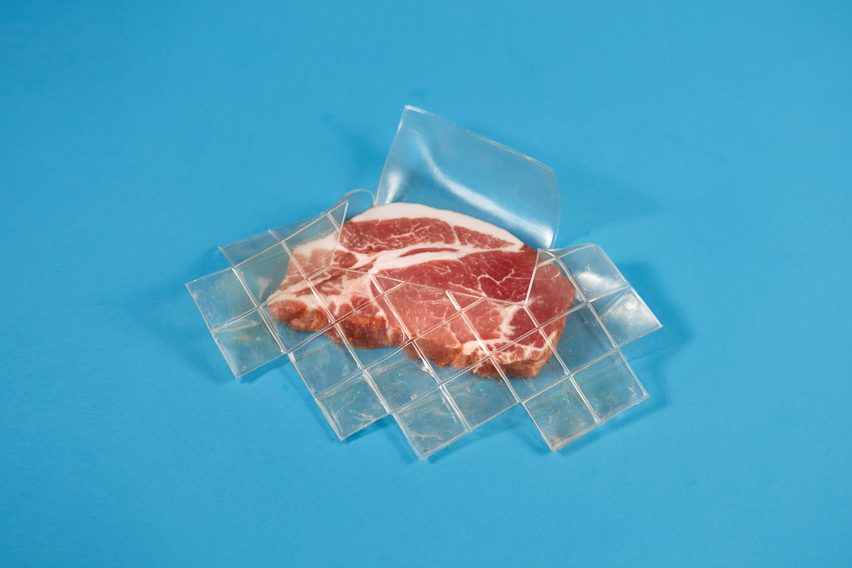
Like the bone vessels, the Bioplastic Skin packaging is biodegradable and Steinarsdóttir hopes it could eventually be used to contain meat from the same animal as the skin it came from, creating a more sustainable way of packaging meat.
The packaging, which takes a few weeks to biodegrade, could become a visual indication of how fresh the products it contains is.
"I would like the material to have the same expiration date as the meat inside it," the designer said.
"So instead of a best before date, you could see if the packaging itself is turning bad to determine if the product inside is expiring."
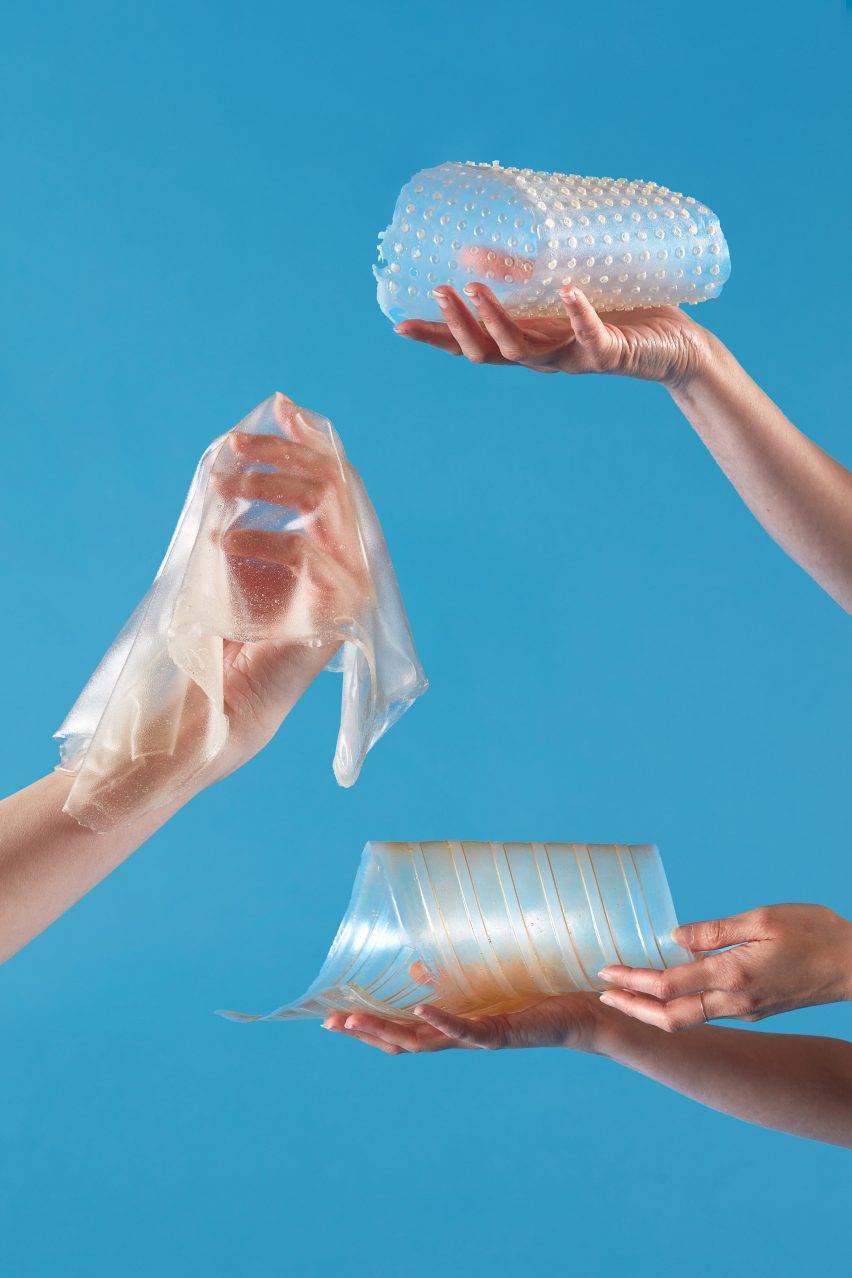
Using these kinds of materials doesn't just help to avoid waste, but can also help make the most out of limited resources.
"I live on an island where one has to be aware of materials or perhaps, the very lack of materials," Steinarsdóttir said. "It’s important to explore discarded matter from different perspectives and find new opportunities for utilisation."
"In this case, my aim is not to make more demand for animal products, rather use what is already there to reduce waste and experiment with disposed materials to discover their full potential."
Steinarsdóttir was shortlisted for emerging designer of the year at the Dezeen Awards 2020.
A number of designers are working on ways of creating new materials from waste products and organic materials. Kathrine Barbro Bendixen has designed sculptural lights from cows intestines, while this year's inaugural James Dyson sustainability award went to Carvey Ehren Maigue's solar panels made from waste crops.